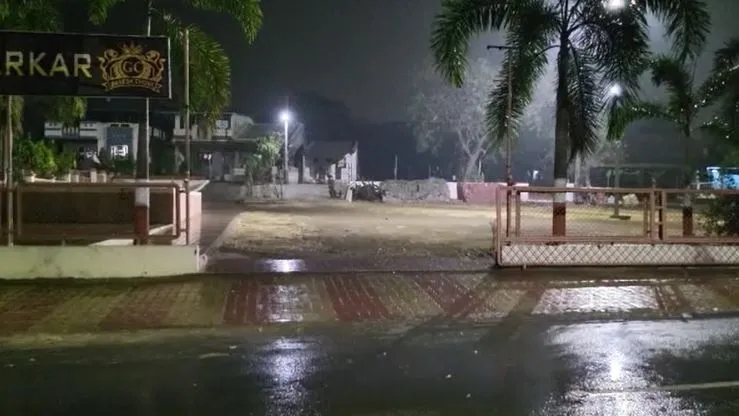Has Gujarat Experienced Widespread Rainfall?

Synopsis
Key Takeaways
- Gujarat received widespread rainfall on June 26, enhancing relief from heat.
- The IMD issued a red alert for eight districts due to the potential for heavy rainfall.
- The government activated disaster response measures to ensure public safety.
- Emergency services are on standby, particularly in flood-prone areas.
- Monitoring and coordination are ongoing via the State Emergency Operation Centre.
Ahmedabad, June 26 (NationPress) Gujarat experienced extensive rainfall throughout the state on Thursday, providing much-needed respite from the recent heatwave. Data from the State Emergency Operation Centre (SEOC) indicates that rainfall was documented in 144 talukas between 6:00 am and 4:00 pm on June 26.
The most significant precipitation was noted in Maliya Hatina, located in the Junagadh district, where an impressive 5.16 inches fell within just 10 hours. Other areas also reported notable rainfall, such as Mahuva in Surat (4.76 inches), Visavadar in Junagadh (4.65 inches), Chikhli in Navsari (4.2 inches), and Khergam (4.17 inches).
In Gir Somnath's Talala, 3.9 inches were measured, followed by Bardoli in Surat (3.46 inches), Ranavav in Porbandar (3.03 inches), and Kamrej in Surat (3.03 inches). Rainfall was not restricted to South Gujarat, as regions like Devbhoomi Dwarka, Valsad, Jamnagar, and Navsari also experienced moderate to heavy showers.
Noteworthy totals include Kalyanpur and Pardi each at 2.87 inches, Mangrol at 2.64 inches, Surat city at 2.76 inches, Gandevi at 2.64 inches, and Jam Jodhpur at 2.56 inches. The city of Navsari recorded 2.7 inches, showcasing the extensive reach of the monsoon's initial wave.
Overall, over 2 inches of rain was logged in 16 talukas, while another 13 talukas experienced more than 1 inch, marking a wet commencement to Ashadh for most of Gujarat.
Simultaneously, the India Meteorological Department (IMD) has released a red alert for eight districts: Banaskantha, Patan, Surendranagar, Rajkot, Jamnagar, Devbhoomi Dwarka, Porbandar, and Morbi.
This alert is issued through the department's Nowcast system to inform local authorities and residents about the likelihood of heavy rainfall and adverse weather in these areas.
In light of the extensive rainfall and the red alert for eight districts, the Gujarat government has activated its disaster response framework to ensure public safety and minimize disruption.
The State Emergency Operation Centre (SEOC) is diligently monitoring rainfall data and coordinating efforts with local administrations in affected districts.
Teams from the National Disaster Response Force (NDRF) and State Disaster Response Force (SDRF) are on standby, particularly in flood-prone and low-lying areas.
Control rooms have been established, and emergency helplines are operational across districts such as Rajkot, Jamnagar, and Banaskantha.
The government has also directed municipal bodies to clear blocked drains, ensure steady electricity supply, and provide shelter to families in need.





